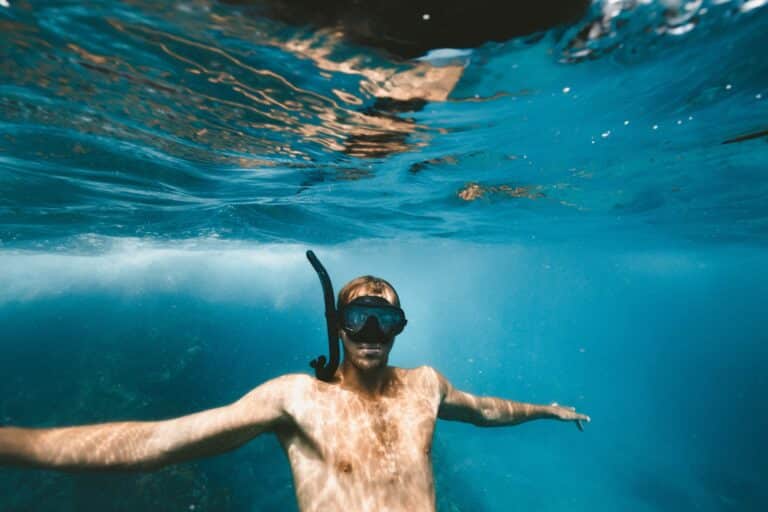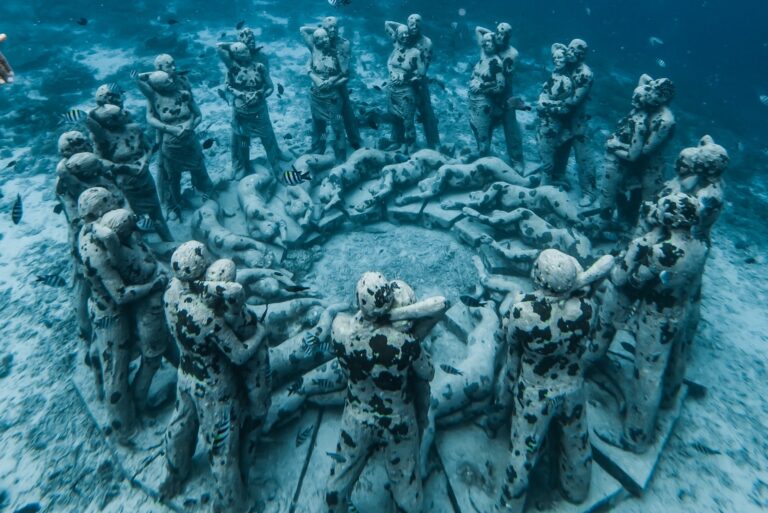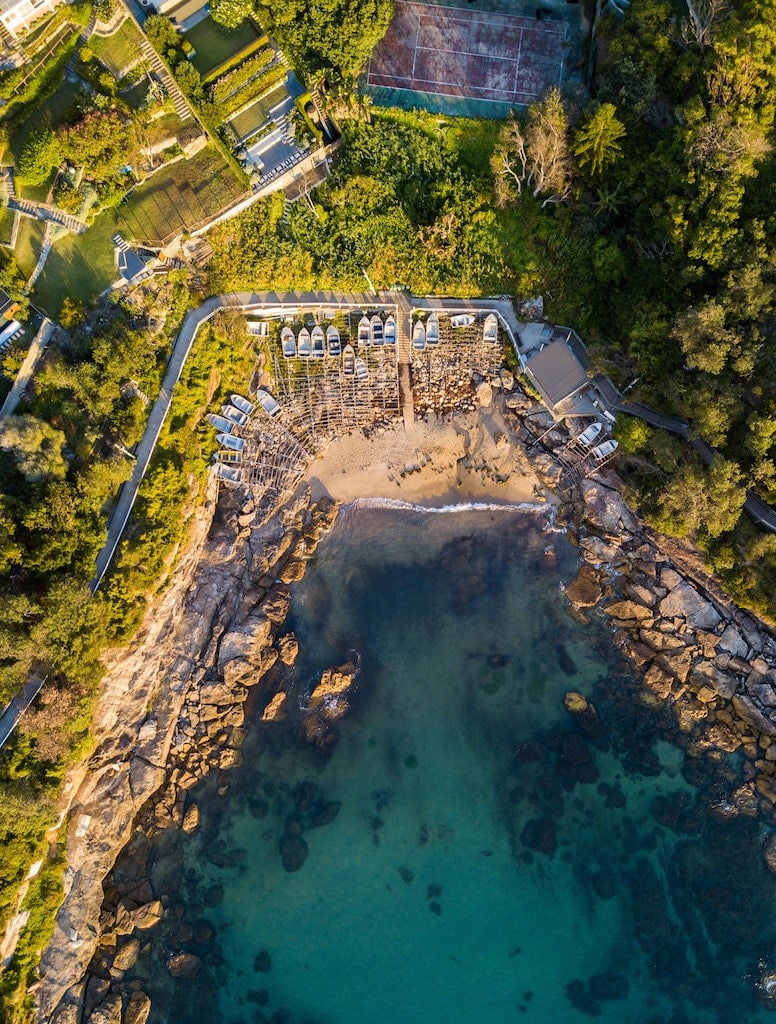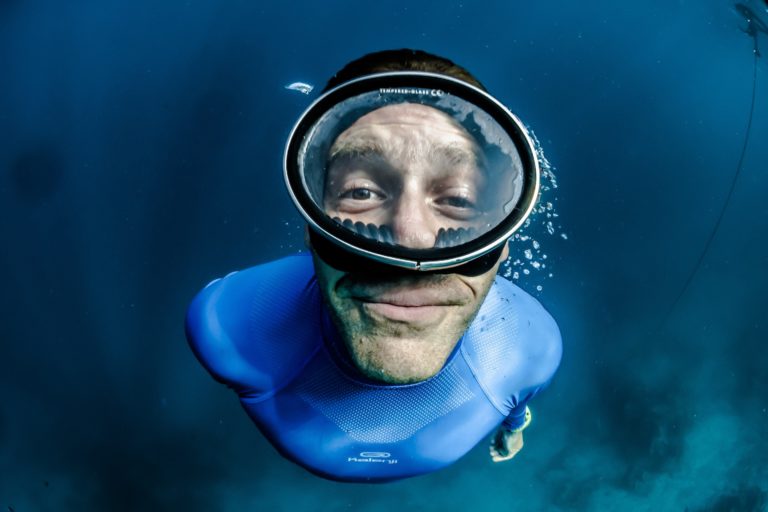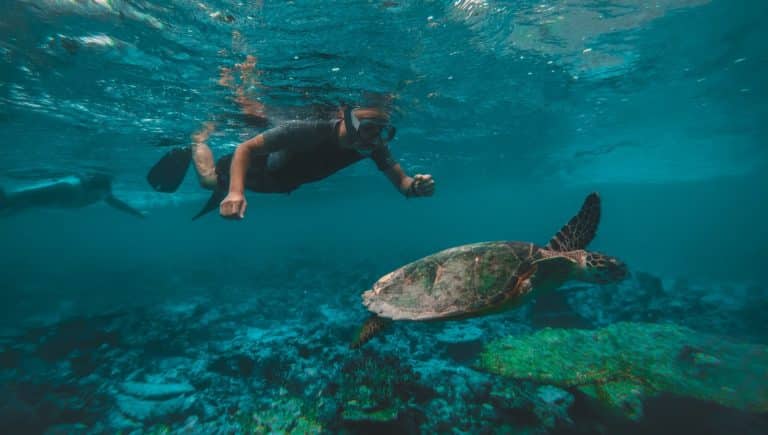Free divers: those strange creatures diving underwater on a single breathe of air. This is such a foreign concept to a scuba diver; where the most important rule is to always breathe! So what is freediving, and why do people do it? And the ultimate question; how long can free divers hold their breath? What may seem to us as something incredible or unachievable (or crazy!) is in truth a beautiful sport of mind and physical stamina.
So let’s go for a deep dive into freediving to better understand what it is and how to breathe underwater like a mermaid, or merman!
Guinness World Record for Holding Breath
So what is the record and how long can free divers hold their breath? Before declaring who is the absolute “winner” of breath-holding, we need to clarify that there can’t be just one champion. This is mainly because freediving as a sport has different specialties, where the time of holding the breath will vary depending on the specialty itself.
This because of one main reason: the more you move underwater, the more oxygen your body consumes. Depending on the specialty, the record may be measured either in minutes, depth, horizontal distance or a combination of these three.
Another reason is that – not being an Olympic sport, freediving is governed by different associations, each of them with their own specialties and records. The two main ones are AIDA International (Association Internationale pour le Développement de l’Apnée) and CMAS.
That said, let’s have a look at the main specialties of this sport (based on AIDA International), and the breath-hold record, for men and women.
Learn How to Increase Your Breath-Hold with Competitive Freediver and Breathing Coach, Tom Peled
How Long Can Free Divers Hold Their Breath?
Static Apnea
This is about the time of breath-holding while floating on the surface, being totally motionless and is normally done in a swimming pool.
Stephane Mifsud, French, holds the world record for men with 11:35 minutes.
Natalia Molchanova, from Russia holds the women’s title with 9:02 minutes.
Dynamic with Fins (DYN)
This is the maximum horizontal distance on one breath, taken in a pool, with fins on.
Mateusz Malina, from Poland, with the men’s record of 316 meters.
Agnieszka Kalska, also from Poland the women’s record of 253 meters.
Dynamic without Fins (DNF)
Same as above, with the difference that no fins are used.
Mateusz Malina, Poland holds the men’s title with 244 meters.
Magdalena Solich Talanda, another Pole, with the women’s record for 191 meters.
Read our interview with a freediving instructor and learn about her freediving experiences.
How Deep Can You Free Dive?
So now we know how long free divers can hold their breath, but let’s check out how deep freedivers can dive down to.
Going down deeper will have more risks involved. It will also cause more exertion which will use up your oxygen quicker. Like with the duration of how long a freediver can hold their breath with different specialties, there will also be various rules when defining the deepest freedive and different records.
No Limits Record
Herbert Nitsch, an Austrian has held records in all eight freediving disciplines that are recognized by AIDA International. He is known as “the deepest man on earth” with an earth-shattering depth record of 214 meters (702 feet).
Nitsch holds the current “No Limits” record where he took a weighted sled to go down as far as possible. He then used an air-filled balloon to return back to the surface.
Constant Weight Record (CWT)
Alexey Molchanov, a Russian who currently holds the Constant Weight Freedive. This means using only your fins and/or arms to descend and ascend without dropping any weights. You will use a line for orientation and can only hold it when stopping your descent. Molchanov holds the men’s record to a depth of 130 meters in 3min 55sec.
Alenka Artnik from Slovenia holds the Constant Weight Freedive Women’s title with a depth of 118-meter/387-foot in 3min 26sec.
Constant Weight with Bi-fins (CWT-BF)
France’s Arnaud Jerald holds the world record with a 116-meter/380-foot dive. This dive took 3mins 30secs.
Constant Weight without Fins Record (CNF)
Alessia Zecchini, Italy holds the record for constant weight but without fins at a depth of 73 meters.
William Trubridge, from New Zealand holds this record for the men’s title with a depth of 102 meters.
Free Immersion (FIM)
Alexey Molchanov, holds the record for this freedive where the athlete dives only by pulling on a vertical rope during both descent and ascent. No fins are permitted. Molchanov holds the men’s record with 126-meter/413-foot with a dive time of 4mins 45secs.
Sayuri Kinoshita, from Japan holds the free immersion record for women at 97 meters.
What is Freediving?
Freediving is a form of diving underwater while holding a single breath. And actually, this is the most natural form of being underwater. In the past when there was no other way to catch fish, freediving has always been part of human nature and our culture. Think about it: how many times did you try – maybe when you were a kid – to take a little swim underwater to see for how long you could hold your breath?
In more recent times, freediving has become a popular sport and hobby as humans find ways to breathe underwater and push their limits.
Why Do People Freedive?
Since ancient times and in different cultures, spearfishing has been one of the main purposes of freediving, both for catching fish or to get useful things such as shells, pearls or sponges.
The critically acclaimed Netflix documentary, ‘Jago: A Life Underwater’ explored the history of the Bajau people or ‘sea nomads’ as they are often called. This cluster of people are spread out around the Philippine and Indonesian Archipelgaos and have evolved to become the world’s best freedivers; thanks for their centuries of fishing practices.
In Japan, the practice of ‘ama’ may be up to 2,000 years old with records as far back as 927 AD of women freediving down to collect pearls and treasures for the emperors.
The first depth record in freediving was reported in Greece in 1913 by the sponge diver Stathis Chantzis who managed to recover an anchor at 83 meters depth. The technique he used was the ancient one used since the time of Alexander the Great by the sponge divers, called “skandalopetra”, which consisted of a flat rock made of granite, with a weight between 8 and 14 kg, attached to the diver and the boat. This allowed freedivers to pull themselves up and down without exerting too much energy.
With time freediving has evolved into mainly two different directions: spearfishing and as a sport itself, mainly to compete and break records. Freediving is also used combined together with snorkeling as a recreational activity.
Conclusion
As you can see, how long free divers can hold their breath will depend on what type of freediving they are doing. We have seen there are different levels of competition with various requirements; from using fins or no fins, to horizontal vs. vertical records, or using assistance from air-filled balloons and weights sleds. But regardless of the level of competition, I think we can all agree that free divers are amazing creatures who have an amazing level of control and discipline with their bodies!
